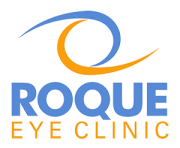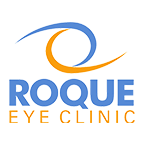
REFRACTIVE SURGERY
LASER VISION CORRECTION
Nothing is more precious than our eye sight. So much of what we learn, what we experience, and what we enjoy, comes to us through our eyes. If you're one of the millions of people who are affected by nearsightedness, farsightedness or astigmatism, laser eye surgery may offer the vision you want, without the constraints of glasses or contacts. PRK is a great option for patients, who are not good candidates for the LASIK procedure. If you are ready to embrace vision without the need for glasses or contacts, consider PRK today.
Imagine waking up and instantly seeing the details of the world around you, without having to depend on glasses or contacts. With LASIK refractive surgery, this dream can become a reality for those who are nearsighted, farsighted, or have astigmatism. LASIK isn’t what it used to be - diagnostic techniques have advanced dramatically over the years and the surgical technology is now more precise than ever before. During the procedure, a laser is used to reshape the cornea, where light enters the eye. This corrects vision by changing the cornea’s shape so that light is properly focused. The procedure takes only minutes and most people can go to work the next day. As with any surgery, there are risks and limitations, and our team of LASIK specialists can review these with you. Waking up with clear, sharp vision is priceless. It’s no secret that the cost of glasses, contact lenses and solution can add up over the years, making LASIK a smart investment. Laser vision correction can change the way you see the world. Find out if it’s an option for you by asking our team of LASIK specialists today.
Small Incision Lenticule Extraction, or SMILE for short, is a procedure that helps correct myopia, also called nearsightedness. Much like LASIK or PRK, SMILE uses a laser to reshape your cornea which corrects your vision. To improve your vision using a laser, your doctor needs to make the correction in the middle, or stromal layer, of your cornea. In PRK and LASIK, the top layer of the cornea is removed or peeled back in order for the laser to access and reshape the stroma. However, in the SMILE procedure, the top layers of the cornea stay intact. A laser creates two thin bubble layers within the stromal layer of the cornea, creating a disc-shaped piece of corneal tissue, called the lenticule. The surgeon gently removes the lenticule through a small incision. Removal of the lenticule permanently changes the shape of your cornea, resulting in better vision. Although the vast majority of patients experience a significant improvement in their vision, like any surgical procedure, complications can occur, but are rare. For example, a major complication could cause your vision to be blurred, doubled, or distorted. Common side effects include glare, halos, and starbursts around lights at night. We will discuss the risks associated with SMILE with you and help you make the right decision. The SMILE procedure may be a better option for those prone to dry eye or people who have active lifestyles where the LASIK flap could be dislodged due to eye injury. It is also a good option for those seeking a fast visual recovery with low postoperative risk. Most patients return to their normal routines just a few days after the procedure. Give yourself another reason to smile. Talk to your doctor to see if the SMILE procedure is your path to better vision today!
NON-LASER VISION CORRECTION
A state-of-the-art solution for addressing refractive errors is the use of Phakic Intraocular Lenses. These lens implants are designed to be inserted within the eye, hidden between the iris and the eye's natural lens. Once in place, the Phakic IOLs work together with the eye's natural focusing system to deliver sharper, clearer vision. Phakic IOLs are an ideal solution for nearly anyone who has the need or desire to rid themselves of glasses or contact lenses. They offer patients an alternative to corneal refractive procedures, such as LASIK or PRK. Phakic IOLs have distinct advantages over corneal refractive procedures. They provide superior quality of vision. They can correct a wide range of refractive errors, including very strong errors. A Phakic IOL implant can be left in permanently, but if the need or desire arises, these lenses can be removed or updated to meet potential changes in your vision needs. Advantages of Phakic IOLs go beyond their versatility and corrective strength. Several design features of the lenses make the implantation procedure safe, minimize recovery time and minimize the occurrence of post-operative complications. If you have the need or desire for quality vision correction, Phakic IOLs are not just an alternative they are the clear choice for superior vision quality.
With laser eye surgeries such as LASIK, your vision is corrected by changing the shape of your cornea. However, this does not prevent the natural aging of the lens, which leads to conditions such as presbyopia - up close blurry vision caused by the decreased flexibility of your eye's lens. Over time, your lens will lose its vitality and you will experience blurriness in your vision; this process is called Dysfunctional Lens Syndrome. With elective lens replacement surgery - also known as Refractive Lens Exchange - the lens is removed and an intraocular lens (or IOL) is implanted into the capsule that held the natural lens in place. The capsule then shrinks and seals itself around the IOL, holding the new lens in place securely. After the surgery, you may experience some minor side effects, including radial halos at night, starbursts, veiling glare and flare, and ghosting. By replacing your natural lens with an IOL, you not only avoid the effects of dysfunctional lens syndrome, but you can prevent the need for cataract surgery later on. We will work with you to determine the best IOL implant for your vision needs. Certain premium IOLs, such as multifocal IOLs, will allow you to see both near and far, and improve the vision problems found with presbyopia. Ask us today how we can prevent the natural, progressive decline of your vision with lens replacement surgery.
COMPARISON OF LASER VISION CORRECTION
| SMILE | LASIK | PRESBYOND | PRK | |
|---|---|---|---|---|
| LASER REFRACTIVE SURGERY | Refractive Lenticule Extraction - Small Incision Lenticule Extraction | Femtosecond Laser-Assisted In Situ Keratomileusis | Femtosecond Laser-Assisted In Situ Keratomileusis | Photorefractive Keratectomy |
| A.K.A. | SMILE, bladeless flapless laser refractive surgery; pocket laser refractive surgery; beyond LASIK; MILE | FS-LASIK, bladeless LASIK, all-laser LASIK | PRESBYOND laser blended vision, LBV | LASEK, ASA, advanced surface ablation, advanced surface treatment |
| GENERATION | 3rd Generation (bladeless, flapless) | 2nd Generation (bladeless) | 2nd Generation UPDATE (bladeless) | 1st Generation (surface) |
| REFRACTIVE SUITE | VisuMax 500 | VisuMax 500 + MEL90 | VisuMax 500 + MEL90 | MEL90 |
| LOCATION | St Luke's BGC | St Luke's BGC | St Luke's BGC | St Luke's BGC |
| CONSULT DR. MANOLETTE ROQUE | Book now | Book now | Book now | Book now |
|
SOFT CONTACT LENS HOLIDAY |
One week | One week | One week | One week |
| COST OF SUITABILITY EXAMS (PHILIPPINE PESOS) |
||||
| REFRACTIVE SCREENING | 5,414 | 5,414 | 5,414 | 5,414 |
| DRY EYE PACKAGE | 3,936 | 3,936 | 3,936 | 3,936 |
| COLOR FUNDUS PHOTOS (OPTOS OR CLARUS) | 1,244 | 1,244 | 1,244 | 1,244 |
| OCT MACULA | 5,664 | 5,664 | 5,664 | 5,664 |
| OCT OPTIC NERVE | 5,664 | 5,664 | 5,664 | 5,664 |
|
SAME-DAY SCREENING & SURGERY Χ pupil dilation Χ cycloplegic refraction Χ dilated fundus examination |
Possible Not Recommended |
Possible Not Recommended |
Possible Not Recommended |
Possible Not Recommended |
| LASER VISION CORRECTION | SMILE | LASIK | PRESBYOND | PRK |
| LVC PACKAGE | 2024 PROMO 126,312 | 2024 PROMO 75,000 | 2024 PROMO 75,000 | 2024 PROMO 50,960 |
| BLADELESS | Yes | Yes | Yes | Yes |
| FLAPLESS | Yes | No | No | Yes |
| INDICATION | ||||
|
MYOPIA (NEARSIGHTEDNESS) SPHERE UP TO -11.0 D |
Yes | Yes | Yes | Yes |
|
ASTIGMATISM CYLINDER UP TO -5.0 D |
Yes | Yes | Yes | Yes |
|
HYPEROPIA (FARSIGHTEDNESS) SPHERE UP TO +3.0 D |
No | Yes | Yes | Yes |
| PRESBYOPIA (VISION AFTER AGE 40) | No | No | Yes | No |
| LASER BLENDED VISION | No | No | Yes | No |
| READING GLASSES AFTER AGE 40 | Yes | Yes | No | Yes |
| POST-OP VISITS | SMILE | LASIK | PRESBYOND | PRK |
| RECOMMENDED (IDEAL) | Day 1; Week 1; Month 3 | Day 1; Week 1; Month 3 | Day 1; Week 1; Months 3 and 6 | Day 1; Week 1; Month 3 |
| REQUIRED (MINIMUM) | Day 1; Week 1 | Day 1, Week 1 | Day 1; Week 1; Month 6 | Day 1; Week 1; Month 3 |
| LIMITED WARRANTY | Included | Included | Included | Included |
| EPITHELIAL ABRASION | No | No | No | 8-10 mm |
| CORNEAL INCISION LENGTH | 4 mm | 20 mm | 20 mm | None |
| BANDAGE CONTACT LENS | No | No | No | Yes |
| DISCOMFORT | One day | One day | One day | One week |
| DOWNTIME | One to three days | One to three days | One to three days | One week to one month |
| HAZE | One day to one week | No | No | One to three months |
| DRY EYE SYMPTOMS | Mild, transient; three months to one year | Mild, transient; three months to one year | Mild, transient; three months to one year | Mild, transient; three months to one year |
| RESTRICTION | SMILE | LASIK | PRESBYOND | PRK |
| LIGHT EXERCISE | One week | One week | One week | One week |
| SWIMMING, DIVING, HEAVY EXERCISE, CONTACT SPORTS | One month | One month | One month | One month |
| POST-OP MEDICATIONS | at least one week | at least one week | at least one week | One to three months |
| SPORTS SAFETY | Yes | No | No | Yes |
| NEUROADAPTATION | ||||
| DISTANCE - DAY | Three days to one week | One day to one week | One week | One week to one month |
| INTERMEDIATE & NEAR | One week to one month | One day to one week | One week to one month | One month to three months |
| DISTANCE - NIGHT | One month to three months | One week to one month | One week to six months | Three months |
| DISTANCE VISION OUTCOMES AT THREE MONTHS | ||||
| UCVA 20/40 | almost 100% | almost 100% | almost 98% | almost 100% |
| UCVA 20/20 | at least 90% | at least 90% | at least 88% | at least 90% |
BOOK AN APPOINTMENT
It takes less than 5 minutes to complete your online booking. Alternatively, you may call our BGC Clinic, or our Alabang Clinic for assistance.


